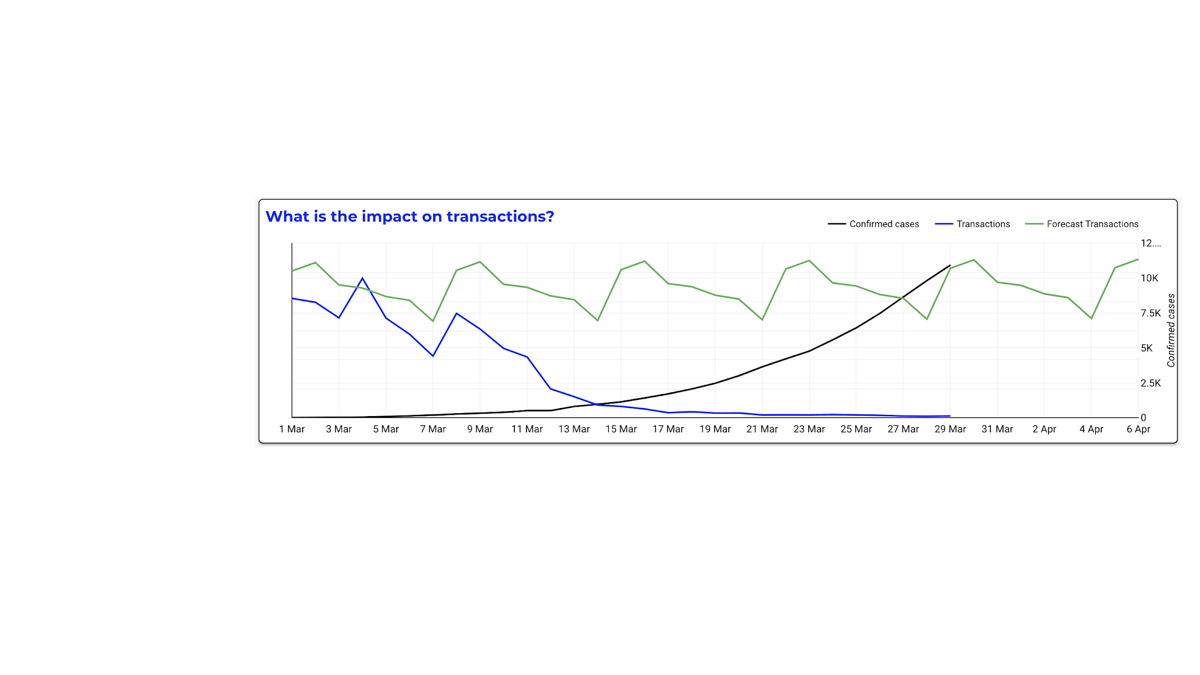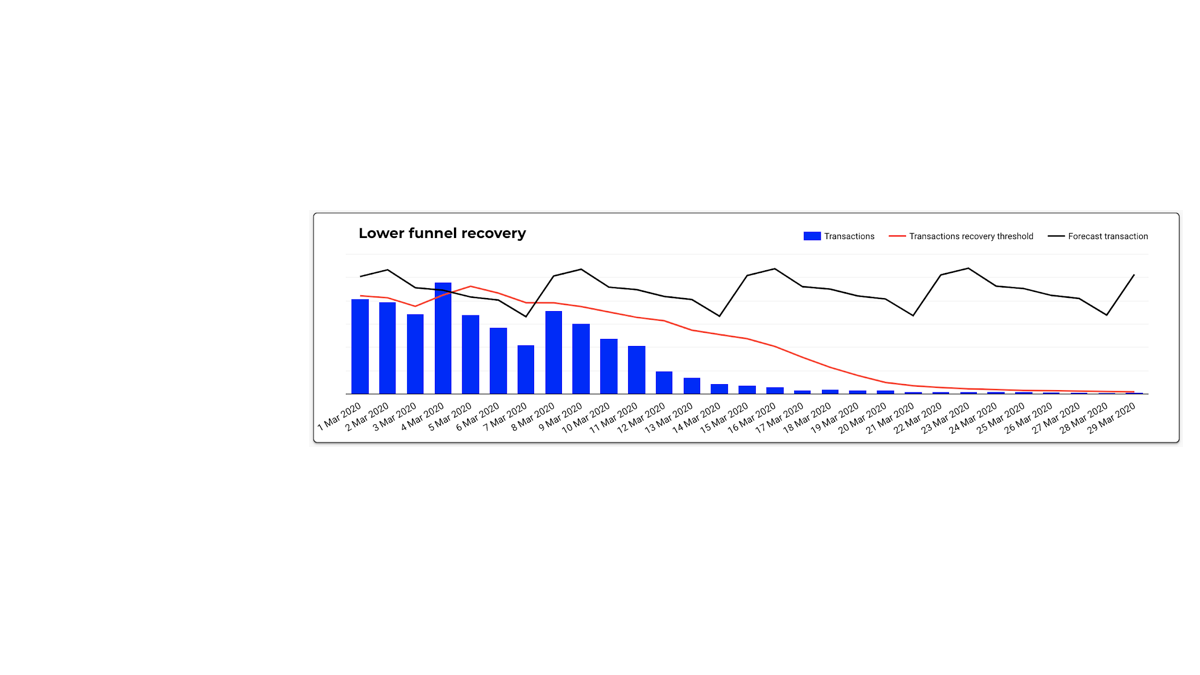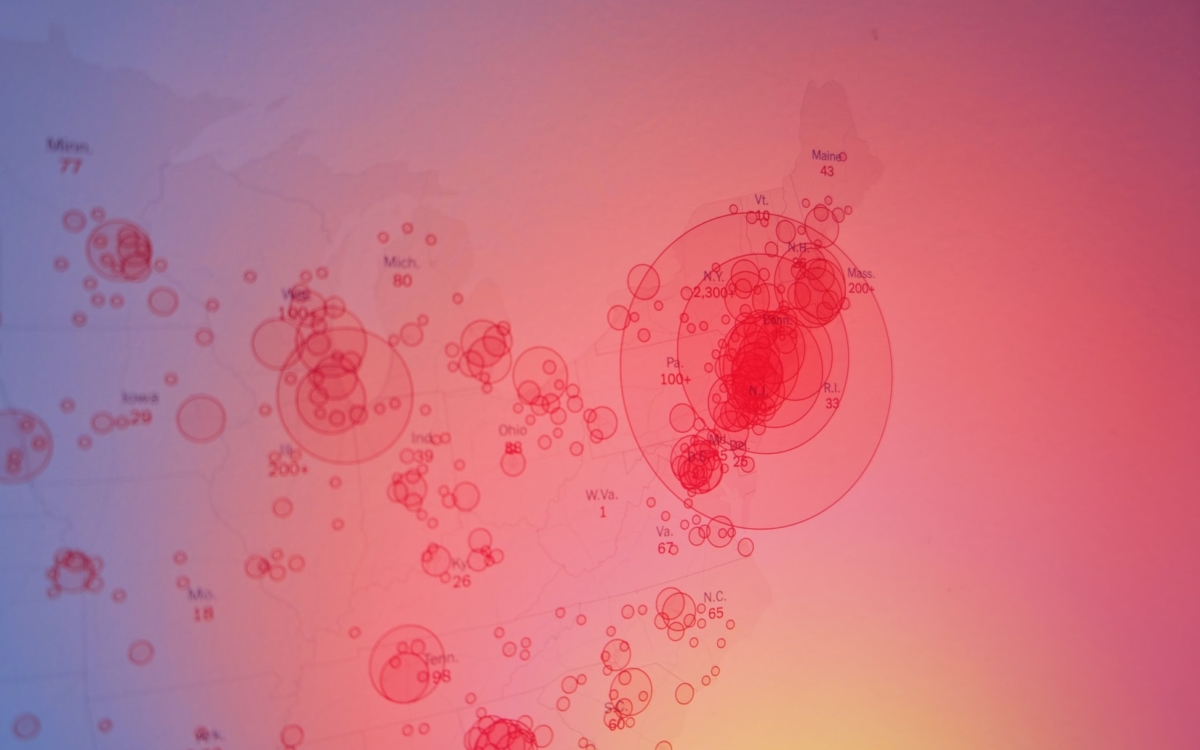Every business is feeling the impact of COVID-19. The pandemic is accelerating the trend towards e-commerce over physical stores, forcing many to reconsider how their business model functions in a digital-first market.
Some sectors are experiencing a positive impact, a temporary sales uplift or burst of engagement, but most are negatively hit. Certain sectors, like travel and leisure, are essentially on pause, while others, like the automotive industry, have seen a fall in consumer interest and conversion.
Whether your business is benefiting or losing out, it is vital to track the impact and the signs that markets are starting to revert to normal. With this information, reactive work and recovery planning can be better structured, leading to a more informed, more effective operation.
COVID-19 has created an uncertain market. We could all do with more certainty in our day to day lives. With this in mind, DEPT® has created two data dashboards, one to track the impact and one to track recovery.
At DEPT®, we aim to reinvent and accelerate your digital reality. To achieve this, we combine data, creative and technology expertise to solve the key business challenge facing your company. Many businesses sit on a goldmine of data; our two models look to put that data to use.
What is the impact of COVID-19 on the main KPIs of different industries?

Our impact dashboard tracks a series of KPIs against the forecasted KPI figure and the curve of confirmed COVID-19 cases in a country of choice. Data is updated each day.
Possible KPIs include transactions, web conversion rate, number of web sessions and so on. This lets your company see the impact on performance at a glance and plan accordingly. By including the curve of confirmed cases, your business is able to track the effect a steep rise has against a flattening of the curve.
Is business for different industries picking up again?

Our recovery dashboard plots a recovery threshold based on improvements in key metrics and how long-lasting these improvements are. The threshold is algorithmically determined, built to show when your business should be taking action. If the threshold is consistently met for multiple days, it signifies that the market is picking up and your business can consider implementing recovery plans.
The dashboard splits recovery into three levels, based on the sales funnel. Upper representing search intent, mid representing visit intent and lower representing conversion intent. The split is made to detect recovery as early in the funnel as possible.
How are these insights generated?
Automated data collection & storage
Our data engineers created automated data pipelines connected with Google Cloud Platform that gather, store, structure and normalise industry-level data. This data is split across the sales funnel for each industry.
The data collected consists of web behavioural data from Google Analytics and search data from Google Search Console. This data is subsequently stored in Google BigQuery.
How did we activate the data?
Our Data Scientists created enrichment pipelines that enrich the data with forecasts for each business and funnel KPI. This information informs the algorithmically created recovery threshold.
The forecasting models were based on historical data up to the outbreak of COVID-19, generating a forecast for the “normal” situation. Using this enriched data, we connected our data in Google Cloud Platform to Google Datastudio where it leads to the simple, but powerful visualisations you can see in the dashboard.
Using data to drive decision making
This is one of many projects that DEPT® has put together for companies to use in response to the COVID-19 crisis. Being able to review daily data and react quickly as a business is vitally important in such a shifting market. Data can drive your decision making and enable your company to build out a strategy that sustains the business in this response phase and sets it up for the recovery.
More Insights?
View all InsightsQuestions?
Strategy Director





